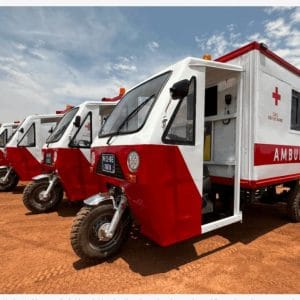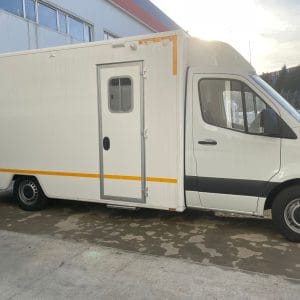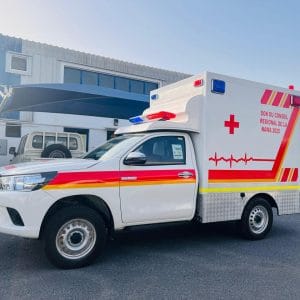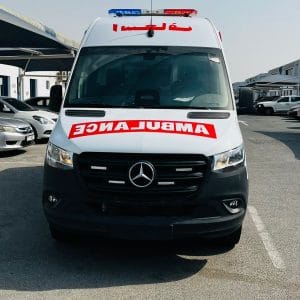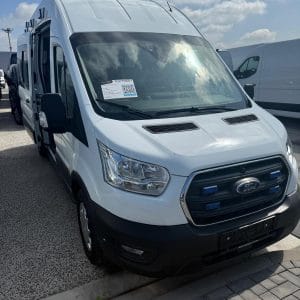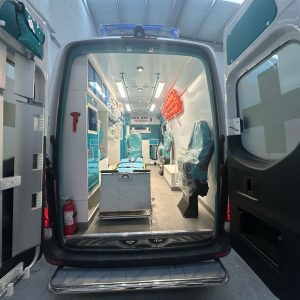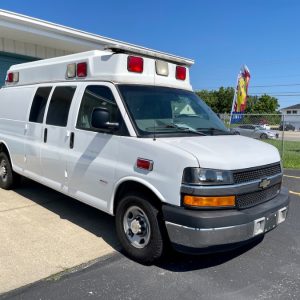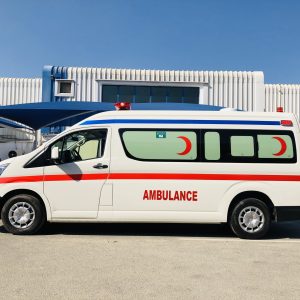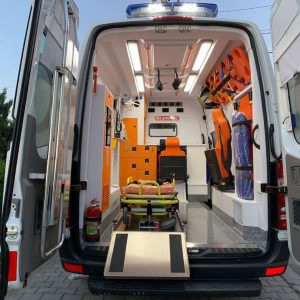Mercedes Sprinter Ambulance Models, In the world of emergency medical services, the vehicle platform is not merely a mode of transport; it is a mobile clinic, a first-response sanctuary, and a critical link in the chain of survival. Among the plethora of options available, the Mercedes-Benz Sprinter stands as a paragon of reliability, engineering excellence, and customization. Specifically, the 316, 317, and 417 chassis models form the backbone of countless ambulance fleets worldwide. Understanding the nuances between these models is essential for making an informed investment that aligns with your operational demands and budget.
This definitive guide provides a detailed comparison of the Mercedes Sprinter 316, 317, and 417 ambulance models, their technical specifications, and a clear overview of the purchasing process.
Mercedes Sprinter 316, 317, 417 Comparison
The numerical designation of a Sprinter model primarily indicates its Gross Vehicle Weight Rating (GVWR) and, by extension, its power and payload capacity. This is the most critical differentiator for ambulance converters and operators.
- Mercedes Sprinter 316: This model typically features a GVWR of 3.5 tons (3,500 kg). It is the most common base for van conversions (European-style ambulances) and is ideal for rapid response units and patient transport services. Its lower weight rating often complies with standard driver’s license requirements in many countries, reducing operational overhead. However, its payload capacity is more limited, requiring careful management of equipment weight.
- Mercedes Sprinter 317: A significant step up, the 317 model usually has a GVWR of 4.6 tons (4,600 kg) or higher in some markets. This extra ton of legal weight capacity is crucial. It allows for a more extensive conversion, heavier medical equipment, additional crew, and supplies without the risk of overloading. This makes the 317 the ideal “sweet spot” for full-size Type II and Type III ambulances that need to carry Advanced Life Support (ALS) equipment.
- Mercedes Sprinter 417: This is the heavy-duty champion of the lineup. With a GVWR of 5.0 tons (5,000 kg) or more, the 417 is built on a reinforced chassis and often features a dual-rear-wheel (DRW) configuration. This provides exceptional stability and a massive payload capacity. It is the preferred choice for the most demanding conversions, including mobile ICU units, large modular boxes, and ambulances operating in remote areas that need to carry significant resources. It future-proofs the vehicle against the addition of ever-heavier medical technology.
Summary: Choose the 316 for cost-effective, agile PTS/response; the 317 for versatile, full-capacity ALS; and the 417 for maximum payload, stability, and intensive care roles.
Automatic and Manual Transmission Options
The choice between transmission types significantly impacts driver fatigue, response times, and overall vehicle control in high-stress situations.
- Automatic Transmission (Recommended): Modern Sprinter ambulances are overwhelmingly specified with automatic transmissions, specifically the sophisticated 7G-TRONIC PLUS 7-speed automatic. The benefits are undeniable:
- Reduced Driver Fatigue: In stop-and-go urban traffic, an automatic transmission allows the driver to focus entirely on the road and navigation, not on shifting gears.
- Faster and Smoother Response: Power is delivered seamlessly, without interruption for gear changes, which can be critical when merging into traffic quickly.
- Easier to Operate: Simplifies training and allows a broader pool of staff to operate the vehicle competently.
- Hill Start Assist: Prevents rollback on inclines, a valuable safety feature.
- Manual Transmission: While increasingly rare in new ambulance specifications, a 6-speed manual transmission may be offered in certain markets or on base models. It can provide a marginally lower initial cost and potentially better fuel economy in the hands of an expert driver. However, the operational disadvantages in emergency medical service—primarily increased cognitive load on the driver—make it a less desirable option for most services.
Verdict: The automatic transmission is the superior and highly recommended choice for ambulance applications, enhancing both safety and performance.
Hospital Transport, Emergency Response, and ICU Mobile Ambulances
The Sprinter platform’s versatility allows it to be configured into three primary types of ambulances:
- Patient Transport Ambulance (PTS): Based primarily on the 316 van. Focused on comfort and basic medical monitoring for non-emergency transfers between facilities. Equipment is typically limited to oxygen, basic first aid, and stretcher securement.
- Emergency Response Ambulance (ALS/BLS): This is the standard 317 or 417 model workhorse. Configured as a Type II or Type III ambulance, it is equipped for emergency calls. It features extensive storage for trauma kits, defibrillators, ventilators, medications, and extrication equipment. The interior is designed for clinicians to work effectively on a patient while en route to the hospital.
- Mobile ICU / Critical Care Ambulance: Often built on the robust 417 chassis to handle the immense weight of specialized equipment. These units function as a mobile intensive care unit, equipped with advanced ventilators, multiple infusion pumps, syringe drivers, blood chemistry analyzers (e.g., i-STAT), and monitoring systems capable of tracking hemodynamic data. They are staffed by critical care paramedics or nurses for interfacility transfers of critically ill patients.
Technical Specifications and Equipment Packages
Base Vehicle Technical Specifications (Typical):
| Feature | Sprinter 316 | Sprinter 317 | Sprinter 417 |
|---|---|---|---|
| GVWR | ~3,500 kg | ~4,600 kg | ~5,000 kg+ |
| Engine | 2.1L I4 Turbo Diesel (e.g., OM 651) | 2.1L I4 Turbo Diesel (higher output) | 3.0L V6 Turbo Diesel (e.g., OM 642) |
| Power (approx.) | 140 – 170 hp | 190 – 220 hp | 220 – 250 hp |
| Torque (approx.) | 340 – 380 Nm | 400 – 440 Nm | 500 – 580 Nm |
| Configuration | Single Rear Wheel (SRW) | Single or Dual Rear Wheel (DRW) | Typically Dual Rear Wheel (DRW) |
| Drivetrain | RWD or 4×4 | RWD or 4×4 | RWD or 4×4 |
Standard Ambulance Equipment Package:
- Safety: ESP (Electronic Stability Program), ASR (Traction Control), ABS, Hill Start Assist, multiple airbags.
- Interior: LED interior lighting (white and red), forced-air heating, separate cabin climate control, easy-clean surfaces.
- Medical: Oxygen system mounts, suction unit, electrical inverters (110V/220V), IV hooks, basic equipment cabinets.
Advanced Equipment Packages Mercedes Sprinter Ambulance Models (Options):
- BSL-II Compliance: Enhanced ventilation with negative/positive pressure control.
- Power Loader: Automatic stretcher loading system (requires higher payload chassis).
- Advanced Power Management: Additional alternators, lithium battery banks, shore power connection.
- Telematics: GPS tracking, remote vehicle diagnostics (Mercedes PRO Connect).
- Advanced Driver Assistance Systems (ADAS): Active Brake Assist, Blind Spot Assist, Lane Keeping Assist.
Purchasing and Delivery Process Mercedes Sprinter Ambulance Models
Acquiring a custom-built Sprinter ambulance is a detailed process that ensures the final vehicle perfectly matches your needs.
- Consultation and Needs Analysis: The process begins with a deep dive into your operational requirements: typical call volume, terrain (urban vs. rural), number of crew, and specific medical protocols. This determines the ideal chassis (316, 317, 417) and ambulance type.
- Specification and Quotation: Based on the consultation, a detailed specification sheet is created, outlining every aspect of the base vehicle and the conversion. A formal, itemized quotation is provided for approval.
- Order Placement and Allocation: Upon agreement, the order is placed with Mercedes-Benz for the specific chassis. This can take several weeks or months, depending on production schedules and customizations.
- Conversion and Manufacturing: The chassis is delivered to the certified ambulance upfitter. The conversion process, which includes building the module, installing electrical systems, and mounting equipment, takes place under strict quality control.
- Testing and Final Inspection: The completed ambulance undergoes rigorous road testing, electrical system checks, and a full medical equipment validation. You are invited for a final inspection before delivery.
- Delivery and Training: The vehicle is professionally transported to your location. Comprehensive training is provided for both the driving dynamics of the Sprinter and the operation of all medical and technical systems within the module.
Lead Time: The entire process, from order to delivery, typically takes 6 to 9 months, depending on complexity and production backlog.
Investing in a Mercedes Sprinter ambulance is investing in a legacy of quality, safety, and performance. By carefully selecting the right model (316, 317, or 417) and specifying it to your exact requirements, you secure a life-saving tool that will serve your community reliably for years to come.



